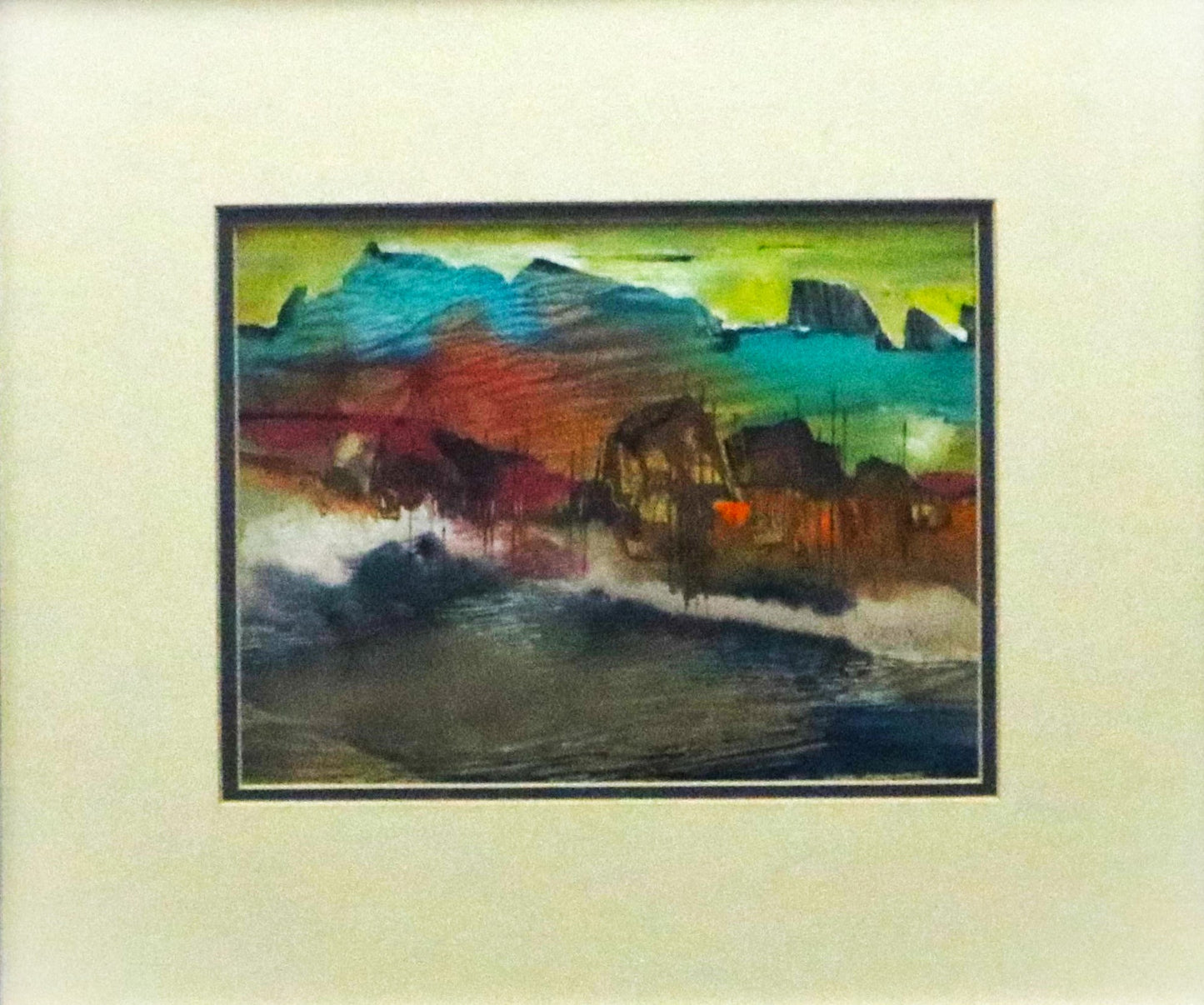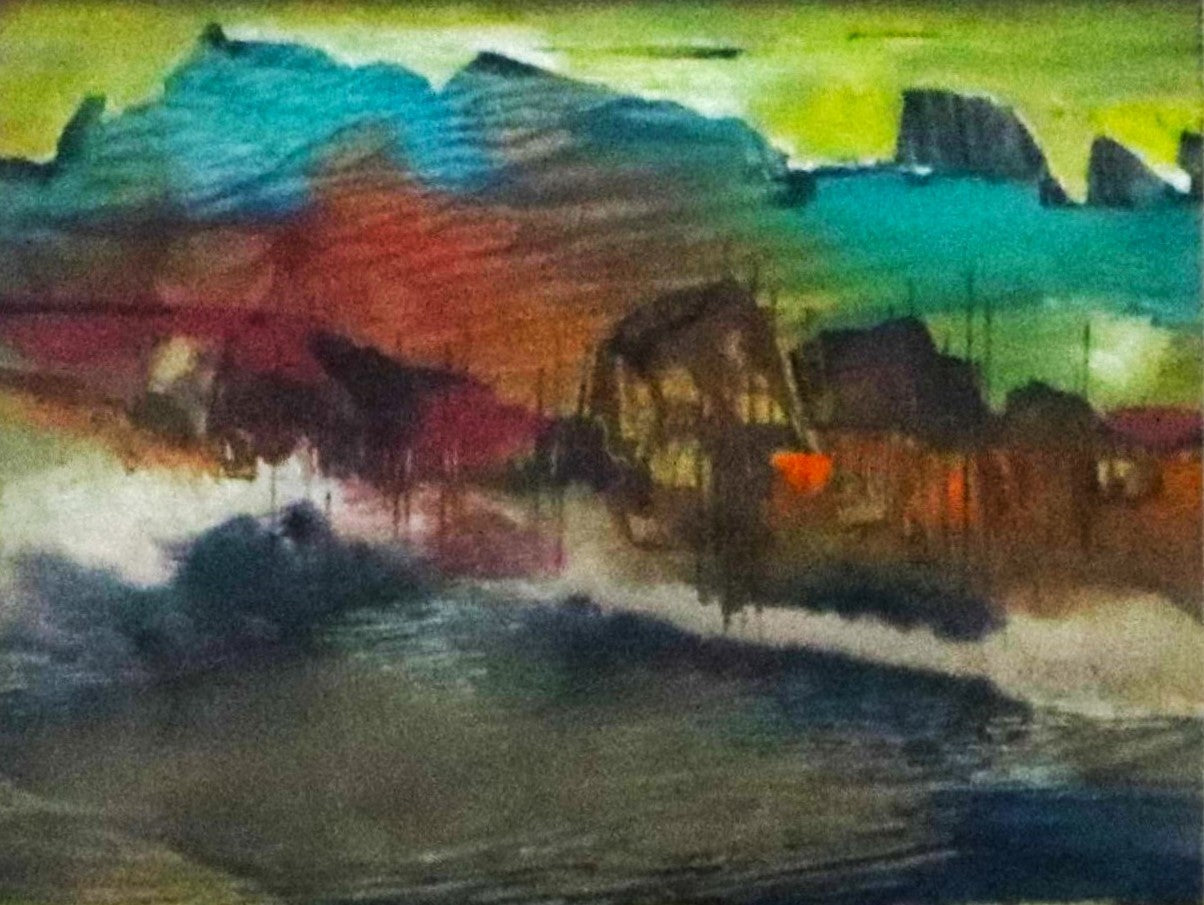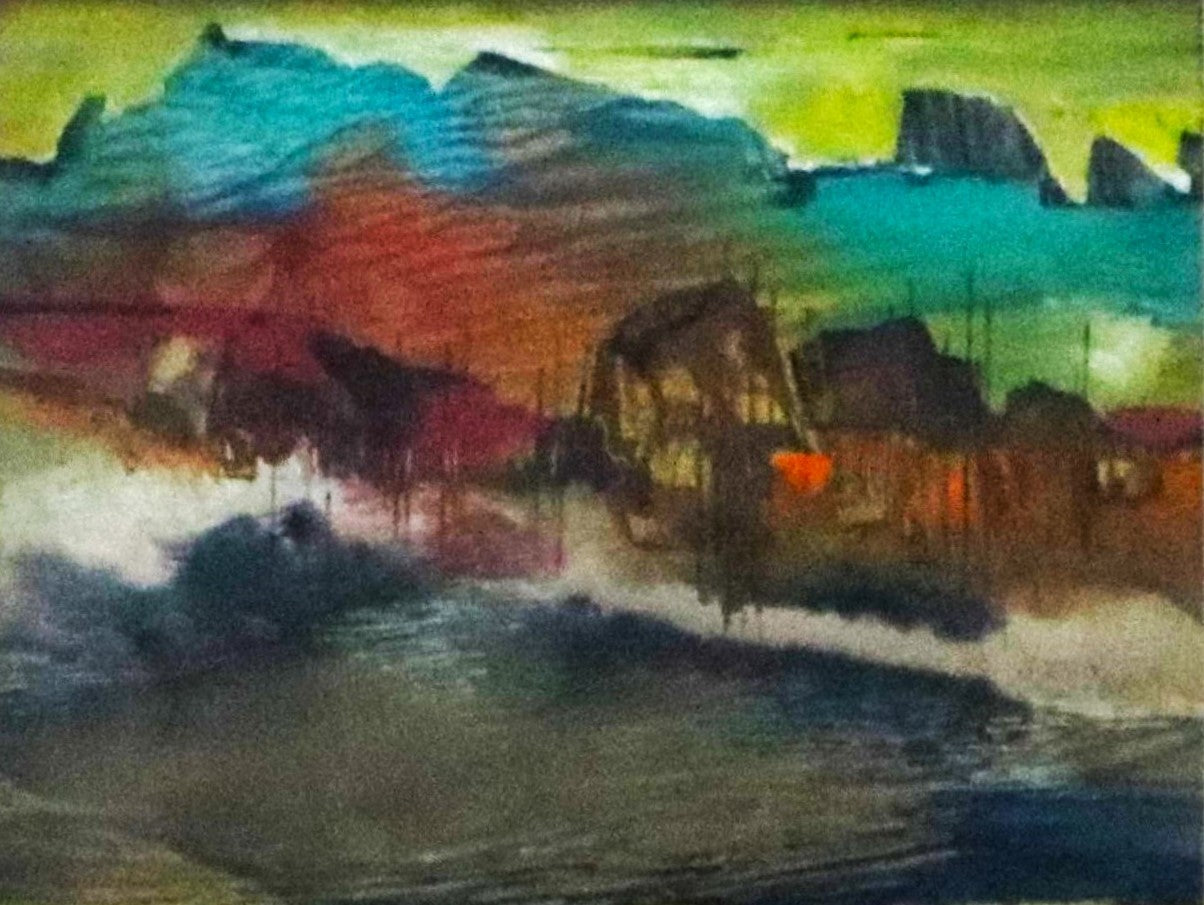Jspartgallery
G S Shennoy Water Colour Abstract
G S Shennoy Water Colour Abstract
Couldn't load pickup availability
Gokuldas Sadanand Shenoy (1938-1994) is not only a nostalgic experience for the listener, but also an inspiring one.
GS Shenoy was born in Udupi in 1938 and was the son of a well off Hindu priest who also had a few businesses. He studied at Sir JJ School of Art in Mumbai but was happy to return home.
A self-made man, Shenoy started Shringar, a small photography studio, in his hometown. He also opened an art gallery and painted to his heart’s content. But the paintings did not sell as people in Udupi were not exposed to art. Shenoy would organise art and craft camps and hold workshops and book readings.
Those were intellectually turbulent times in Dakshina Kannada with artists unable to earn a good living by selling their works. Shenoy led a movement to give people a voice and demand that artists be considered professionals with a right to earn through their art. He was the brain behind many artistic movements in South Kannara like Kalamela and became member of Mysore Art Council, Lalit Kala Akademi and other august bodies. He was made dean of Chamrajendra Academy of Visual Arts, Mysore, and spent his last years promoting and bolstering art education.
Udupi is a mesmeric place with the Arabian Sea on one side and the Western Ghats on the other. It rains heavily here which makes nature lush and verdant. “You can see various shades of green and the sunrises and sunsets are always bewitching,” says Gurudas. GS Shenoy’s landscapes capture the energy, spirit and natural beauty of his hometown along with its wonderful people.
GS Shenoy was disciplined to the core. He would start painting at 9am, take a short lunch break and nap after which he worked till 5pm.
Shenoy would travel to different cities and paint what he saw there. He shifted to Bangalore from his native Udupi in the 80s looking for more exposure and clients.
In Bangalore, he was upset to find no art galleries and limited platforms. The firebrand artist protested on the pavement outside the Bible Society. “He was an art activist and a philosopher who strove to take others along,” says Gurudas (his Son).
Source: Footprints of an art legend by Sangeeta Cavale Radhakrishna




